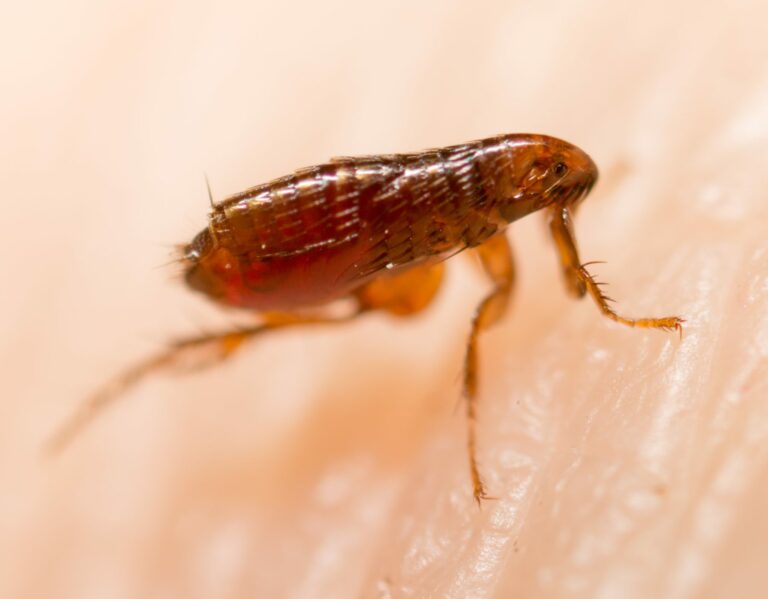Bed Bug FAQs
I thought bed bugs were a myth to scare children, they exist?
They do exist and they do come out at night and bite you in order to feed. So the nighttime saying is true. Bed bugs are insects that feed on warm blooded animals as their source of nutrition. These pests are small and flat, which makes them an ideal size and shape to hide within seams, cracks, and crevices. In order to be closer to their food source, they choose to hide within mattresses, bed frames, and box springs. Because of their quick and elusive nature, most people don’t realize they have an infestation until it becomes a large problem. In that case, they will spread to other places such as couches, electrical outlets, and the baseboards within a home.
Aren’t bed bugs only prominent in poor neighborhoods?
No. This is one of the biggest myths surrounding bed bugs. Although bed bugs are often spread in areas that have a higher population density, which are often underserved neighborhoods, this does not mean that a large home in the suburbs cannot get bed bugs. Bed bugs only need a host and a place to hide, anyone can be their victim.
What are some ways to repel bed bugs?
WARNING: The definition of repel is to “to act with a force that drives or keeps away something”. It does not mean to exterminate or to eradicate. Repelling bed bugs only means to keep them away from you, not to remove them. Please keep that in mind with the following tips for bed bug prevention:
Clean: Vacuum heavily in all areas of the home. It will not eliminate an infestation, but it could reduce the population and decrease the speed of an infestation. Be sure to completely remove any floor clutter as well. Be sure to empty the vacuum canister outside once you are finished!
Move Furniture: Keep all furniture items at least a foot away from the wall. These pests often hide in the baseboards of the wall.
Heat Treat Clothes: Wash and dry items at a minimum of 140°F for at least 40 minutes. This would include clothes and anything else that can be safely placed in the dryer.
Dispose of Infested Items: Dispose of completely infested furniture items. In some extreme cases, it may be for your benefit to dispose of items that have a large amount of bed bugs, eggs, and nymphs.
What is the best way to get rid of bed bugs?
There are two main methods of exterminating bed bugs that many professional pest control companies use. One of which is chemical-based and other is an eco-friendly heat based treatment.
Heat Treatment: A bed bug heat treatment involves a bed bug exterminator bringing specialized equipment to raise the temperature of your home to kill bed bugs. Eggs, nymphs, and adult bed bugs die within 90 minutes of being exposed at 118°F (48°C) or immediately at 122°F (50°C). To ensure all bed bugs are dead, many companies, including ourselves, raise the temperature typically between 130°F and 145°F for several hours. By placing thermometers throughout a home, we can monitor the temperature to make sure it is hot enough to kill all bed bugs.
This non-chemical treatment is highly recommended to those with a bed bug infestation, especially if you have children or pets. Not only does it have a low risk of damaging property, it eliminates all eggs, nymphs, and adults in just one day!
Insecticides/Pesticides: For a cheap fix, people and professionals often rely on insecticides or pesticides as a control strategy. Those that have a bed bug infestation choose to hire a professional that exterminates using chemicals and some rely on DIY products, like Diatomaceous Earth, that are found at their local hardware store.
Although the EPA has approved over 300 insecticides for use to kill bed bugs, there are still products out there that are not EPA approved. If you are reading this thinking that chemicals are the way to go, at least make sure it’s on the list.
Its convenience, accessibility, and cost difference appeals many to this option, but could present harmful fumes into your space and often takes more than one treatment to complete exterminate all life forms of bed bugs. It also could be harmful to people with respiratory issues and pets.
If you would like more information on the difference between chemical-based treatments and a bed bug heat treatment, read: Killing Bed Bugs: Heat vs Chemical.
Do bed bugs spread disease?
Although bed bugs feed by biting their host, bed bugs are not known to carry any diseases.
What do bed bug bites look like?
Often times, bed bug bites will be small red welts that are in a line on your skin. Although its not limited to these areas, bites will typically be on places of your body that are exposed at night.
But it is important to note that you cannot judge a bed bug infestation by bite marks. Many people have completely different reactions, if they have reactions at all. Many victims show no sign of being bitten by bed bugs, but may have an infestation in their home.
Does dry cleaning remove bed bugs?
Yes, but it comes with risks to the dry cleaners. If you take your bed bug infested items to the dry cleaners, TELL THEM. Depending on the solvents and heat process they use, it may not be hot enough to eradicate all forms. So they will have to dry heat your items before putting them through the dry cleaning process. They will also ensure your items do not mix with other people’s clothes to reduce the risk of the infestation spreading.
Hey Cleveland! Call Bed Bug BBQ at (216) 232-2629 or contact us through our website, if you or anyone you know needs the bed bugs out of their home in 24 hours. 60 days guarantee!







